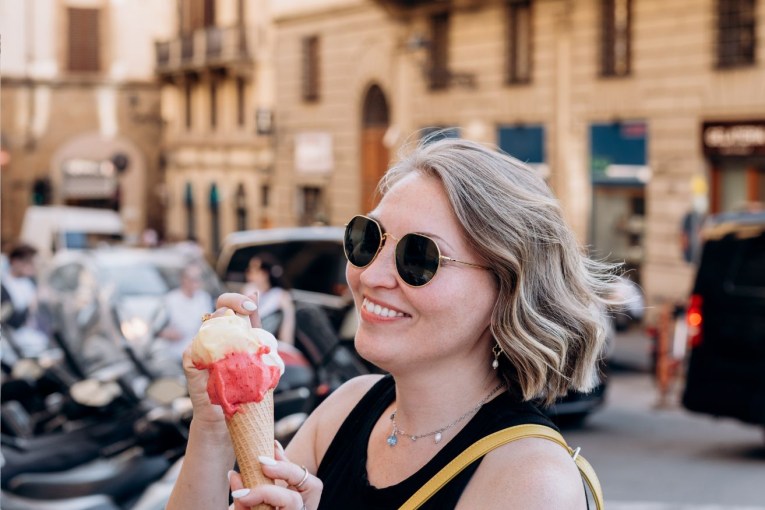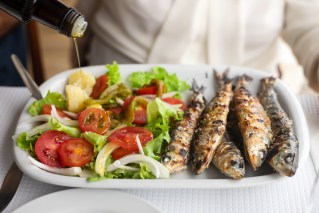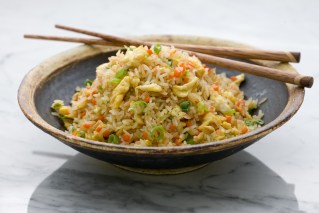Become a coffee expert before your next break
It’s a caffeine boost, a momentary escape from the office, and a delicious drink. And every morning you thank God, the barista and everyone else involved in its production when you finally get your hands on a cup of coffee … the good, freshly-brewed stuff, we mean.
Australians drink 2.1 billion cups of coffee at home and in cafes every year and each spend thousands of dollars (if you add up all your purchases) for the privilege, but there’s a lot more to the coffee than your standard flat white.
Melbourne-based Mark Dundon was one of the founders of legendary St Ali coffee brand and is now at the helm of roaster Seven Seeds. He drinks all kinds of coffee, from an espresso to a pour over.
“A coffee is sometimes treated like a wake-up kick or something that just has to happen … but if you are paying $4 for a cup of coffee you should be able to enjoy and appreciate it.”
So our humble advice is to skip the flat white and explore. You’ll be surprised how much pleasure your daily brew can bring you. Here’s our guide to becoming an expert of world of coffee.
1. Origins of the bean
The coffee belt is where all the coffee – one of the most traded commodities in the world – is grown. Basically around the equator, it includes Brazil, Central America, Ethiopia, Kenya and Indonesia.
Where the beans come from is important for two reasons. The first, Dundon says, is so you can be socially conscious. The second reason is taste. Every country offers a different taste profile and grows coffee differently.
2. Know your bean
Every coffee shop will offer at least one blend. Speciality shops will offer more. Dundon says single origin (from one country) is bare minimum information now. Here’s the basics:
• Ethiopia: Arabica coffee originated here, and the coffee still is grown in the wild under forest canopy. It has a beautiful wild floral flavour.
• Brazil: One of the most commonly available in Australia – a deeper bodied coffee, a little less floral, more chocolate.
• Kenya: A very unique profile with a highly acidic base (a really good attribute in coffee).
• Central America: In this area there are a lot of different flavour profiles because of the processing styles – washed, honey coffee or natural. For example El Salvador has a creamy, old school, sweet coffee – great for espresso. So ask your barista.
• Indonesia: Very wild, a bit funky. Dundon says Australians don’t use these beans as much because the processing is a bit off, “but that’s what a Sumatran coffee is, that fermenty flavour”.
3. Seasonal
Coffee parchment laid to dry at Yukro Cooperative in Agaro, Ethiopia. The process will take 10+ days. pic.twitter.com/p6xnOH8ZGQ
— Aleco Chigounis (@AlecoChigounis) December 12, 2013
The term “seasonal blend” is often bandied about in coffee lairs. What it means is that the coffee has been recently harvested and is no more than a year old.
Places like Dundon’s Seven Seeds will have a seasonal house roast that changes monthly according to availability, so don’t be surprised when your favourite coffee abruptly changes flavour.
4. The roast
Sample Roasting Class at Market Lane today, do’s and don’ts! pic.twitter.com/vYuXKjO3yG
— Market Lane (@marketlane) March 19, 2013
Aside from International Roast, which probably lasts forever without significantly losing its flavour, most coffee should be used within three weeks of roasting. A dark roast will make the coffee taste generic, Dundon says, with the trend now to roast lighter to get the most flavour out of the beans.
But a word of warning: if you let your beans grow old, they’ll lose their flavour.
5. The grind
The best grind is a fresh one. It has the power to boost your coffee enjoyment tenfold, so don’t buy pre-ground if you can avoid it. But the fineness of the grind will depend on what type of coffee you are making. According to Dundon, the best way is burr grinding.
This process, which can be manual or electrical, leaves an even sized grain and can be varied depending on the size needed. And DON’T USE A BLADE SPICE GRINDER. Just don’t.
6. Five ways to brew coffee
Espresso: Brewed under intense pressure, espresso is the strongest way to brew a coffee meaning it has a heavy taste profile. Don’t expect to notice the delicate flavours.
Grind: Very fine
Coffee: Low grown is good, but almost anything goes.
Stovetop: The coffee roaster’s most feared brew method, a lot of people use it to get something strong and intense, like an espresso, at home.
Grind: Fine
Coffee: Low grown Indian or Brazilian coffees.
Plunger /French press: A plunger coffee, brewing the coffee through immersion in water without the paper filter isn’t as intense as espresso.
Grind: Coarse
Coffee: Lighter roast, high grown varieties
Filter/pour over: As in the picture above Bondi Bikkies, a pour over is slightly more like tea. Dundon recommends giving it a go if you drink long blacks or if you find espresso too intense.
Grind: Medium
Coffee: Lighter roast of higher grown floral beans – try an Ethiopian variety
Instant: Boil kettle. Get tin. Spoon desired amount into mug. Pour water. Stir. Add milk and sugar as desired. Instant …
Grind: No need!
Coffee: International Roast. Nescafe Blend 43. Moccona.
6. Ask questions
Dundon’s final advice to find your own perfect cup, or if you just want to give a pour over a go, is to talk to your barista. “We train staff, so talk about what you want to get, your brew method, what you like and what your interests are. People should be able to help you out.”









